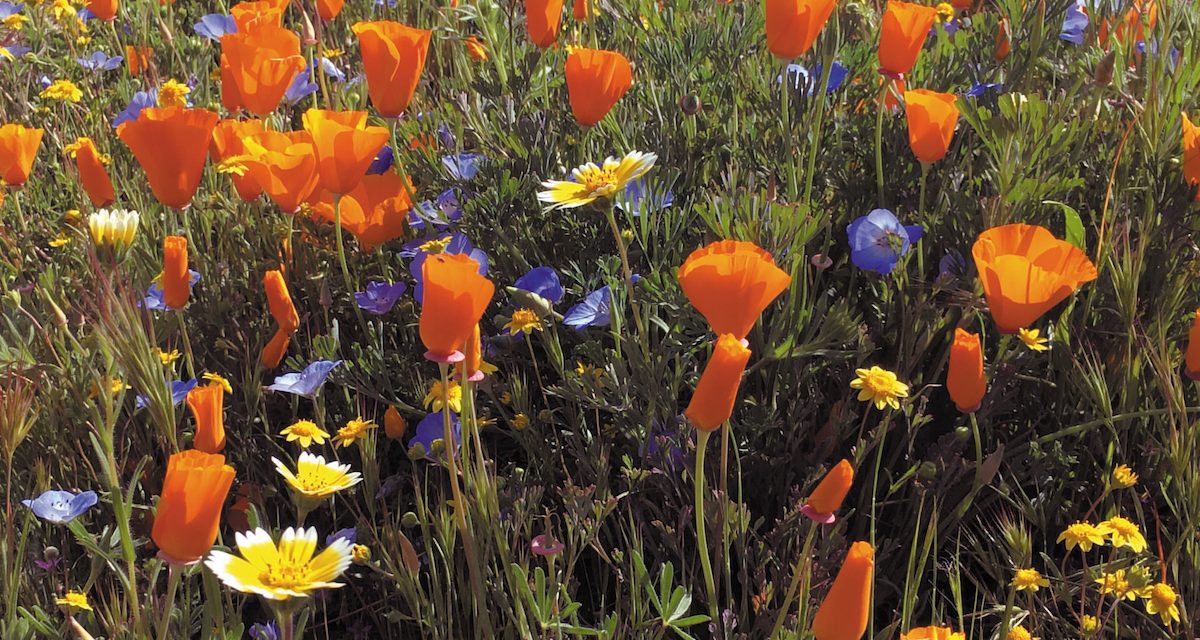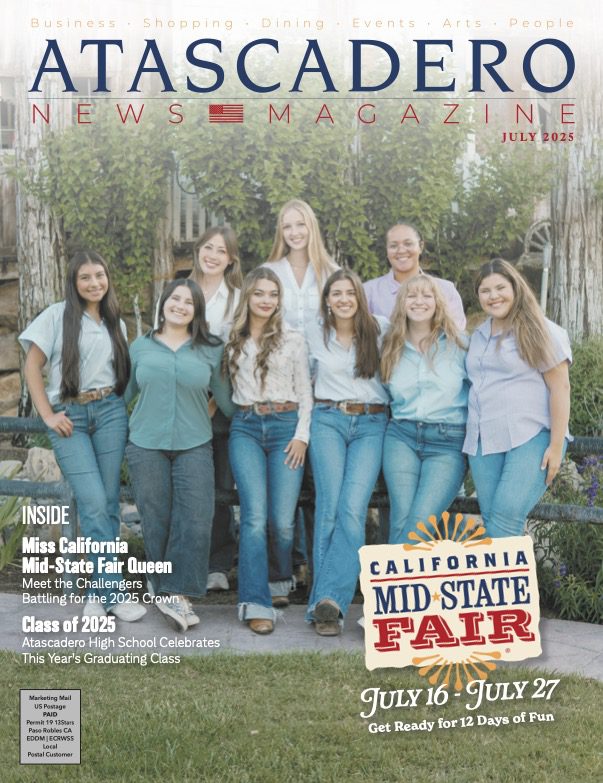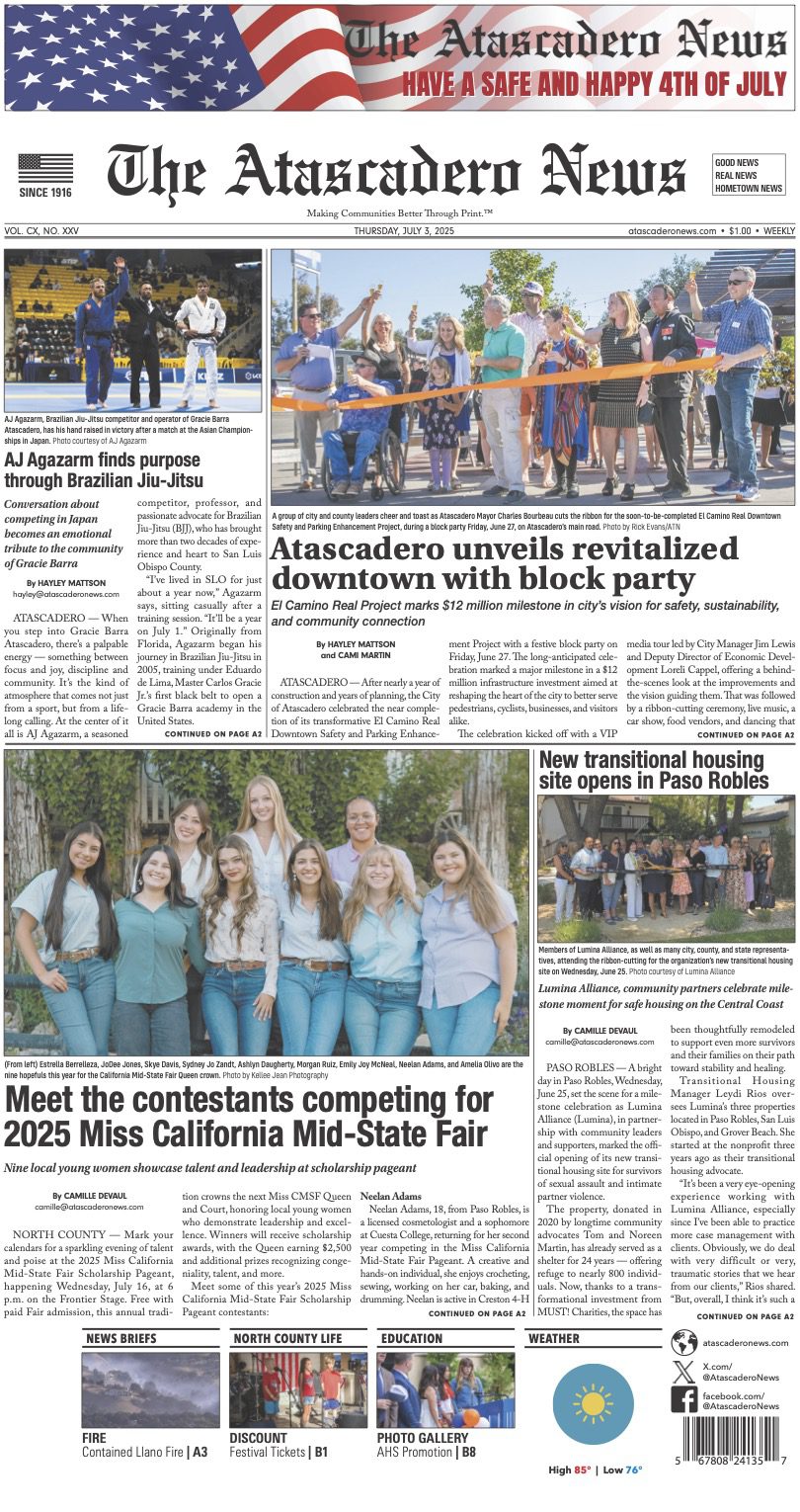Ask anyone in San Luis Obispo County if they remember California’s Superbloom of 2019, and chances are their answer will be an excited “yes.” Who could forget? California’s last Superbloom made national (and even global) news as wildflower mania gripped the state.
Some of the best wildflower viewings can be found right here in our own backyard. Santa Margarita is an officially designated Gateway to the Carrizo Plain National Monument, situated off Highway 58, about an hour out of town. An amazing place to explore on its own at any time, the Carrizo Plain is the star of many photos taken during superbloom years with its Easter egg-colored hills acting as a backdrop to Soda Lake and wide expanses of colorful fields of flowers.
Photos of hillsides, meadows, and open spaces covered with spectacular displays of nature’s most brilliant colors filled the media with the blooming flowers so prolific that the spectacle could even be seen from outer space via satellite images. Already there’s been trouble in paradise as swarms of flower-frenzied fans in some earlier blooming areas have already been “banned” due to bad behavior. So to avoid any problems, here is what you can do for maximum enjoyment and to help ensure these special areas of beauty will remain for future generations.
First of all, it’s important to note that the superbloom phenomenon occurs thanks to trillions of tiny seeds of mostly annual plants, whose life cycles are completed within one year or season, as opposed to a perennial, which in the right conditions can continue its life for multiple years.
Some of the best spots for a superbloom can be found where the landscape conditions are naturally hot, dry and generally inhospitable to sustain many perennials without supplemental watering (think of a rocky hillside, a desert or a sparse and arid grassland). The very nature of such locations actually have helped to preserve the wild and sporadic beauty that we have come to seek out when the blooms demand attention as these places are often deemed too desolate, dry, and difficult for human habitation, with many referred to otherwise as “barren wastelands.”
With great unpredictability, a year will come along when the rains continue to fall, keeping the soil perfectly moist and with environmental conditions just right, staying relatively cool as spring approaches and not too hot too soon, the soil begins to stir with awakening seeds, finally breaking out of their long slumber of dormancy. The wait time for perfect conditions could be one, five, or 10 years or longer, with studies in controlled situations showing that seeds are perfect little time capsules that can even stay viable for up to 70 years or longer, waiting for conditions to be right for growth.
You’ve probably heard it before, but please be respectful of the plants, keeping to the paths and designated parking areas. Many times we witness (or have taken) the careless footsteps or actions of those who don’t understand the fragility of these landscapes. When cars are parked “just a little off the road,” when people walk off a path or even next to each other stepping on “just a few plants” or even picking “just a few flowers,” or worse, “what could be the problem?”
During a superbloom, there looks to be such an abundance that these “small actions” can’t possibly do any harm, but this sadly isn’t true. The usually thin soils actually can become compacted or destroyed under the weight of tires and footsteps, which over the years cause ever-widening barren trails and dead zones next to roads, and each crushed plant or picked flower results in the loss of tens to hundreds of seeds for future generations of flowers.
For best viewing, grab a wildflower ID book, and look for as many different plants or colors as you can find. The biodiversity during a superbloom is amazing. If you can revisit an area, it’s possible to witness the progression of colors through the brief season as an area can change from blue or pink. From the early season blooms of Baby Blue Eyes, or Shooting Stars, to the multitudes of yellows, as seen in Goldfields, Tidy Tips or Fiddlenecks; whites from Popcorn Flowers or Blow Wives; purples, pinks, and blues from various Lupines, Owls-Clover, Thistle Sage or Phacelia; and of course, the ever-popular orange of California Poppies and finally ending with the pinks of Farewell to Spring.
Avoid weekends and holidays, if possible, to avoid the crowds, bring water and be sure to fill up on gas in advance since most wildflower areas have no services available, and sunny days are best as some flowers, such as poppies, can be closed on cloudy days.
Be sure to fuel up on gas and food from one of the local restaurants or pick up some snacks or sandwiches from the Margarita Market in Santa Margarita before heading out as there are no services once you leave town. Along the way, you will be treated to many colorful patches of blooms, especially if you make a stop at Shell Creek Road to your left, marked by a windmill and meandering creek about 20 to 30 minutes from town. If you’re short on time this is the place to go. Remember to leave no trace and please pack out any trash.
Can’t get the superbloom out of your brain? You can learn more by visiting the Goodwin Education Center while out at Carrizo Plain; go to the Bloom! California website at bloomcalifornia.org to learn all about why and how to plant, maintain and grow your own California native garden, and join or donate to a local organization that helps to educate and preserve these special places and share the joy with your friends and family.
ATASCADERO NEWS MAGAZINE
Copies of Atascadero News Magazine are directly delivered to 11,500 readers in zip codes 93422, 93432, and 93453 and 1,500 dropped with support from advertisers and subscribers. Together, we are Making Communities Better Through Print.™
To subscribe or advertise, click here.












